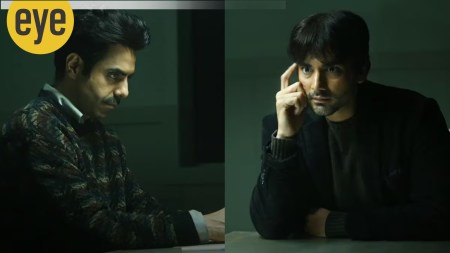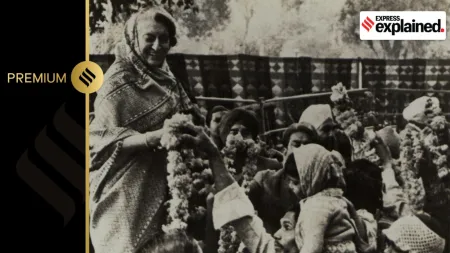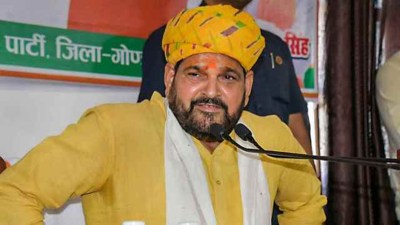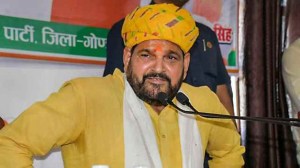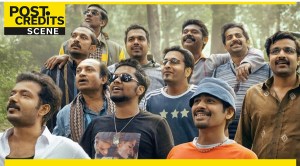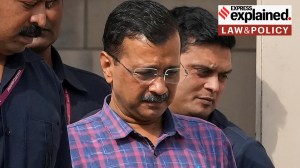- India
- International
Victor Banerjee: ‘We tend to hero worship and are afraid to criticise icons, understand their frailties’
Victor Banerjee returns to the screen as Rabindranath Tagore in Thinking of Him, a film by Argentinian director Pablo Cesar that explores the poet’s soul relationship with critic and writer Victoria Ocampo.
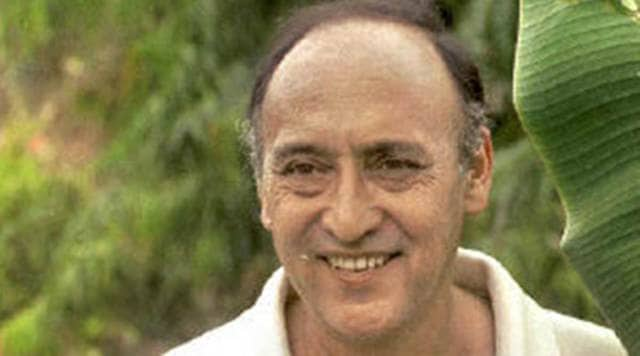 Victor Banerjee returns to the screen as Rabindranath Tagore in Thinking of Him, a film by Argentinian director Pablo Cesar.
Victor Banerjee returns to the screen as Rabindranath Tagore in Thinking of Him, a film by Argentinian director Pablo Cesar.The only thing constant about actor-author Victor Banerjee is his love for Landour, the birds of Uttarakhand, his writings and being a “son of the Bengali culture” as he calls himself. And it is because of the last role, one he takes very seriously, that he has returned to acting. Despite suffering consecutive bouts of Covid and dengue, he’s driven down all the way from the hills to promote the Indo-Argentine film, Thinking of Him, where he plays poet laureate Rabindranath Tagore.
Directed by famed Argentinian director Pablo Cesar, the film explores Tagore’s relationship with Argentine litterateur, critic and writer Victoria Ocampo. Tagore truly became a global citizen after he wrote Gitanjali and his works had a profound impact on the intellectual movement in Latin America. Ocampo was one of his most ardent fans, who went on to become his emotional equivalent and sounding board, both drawing sustenance from each other and sharing their imagination in the most platonic and soulful way that could ever be. Though they met each other very briefly in the 1920s, each was to nurture their cross-continental ties through a series of letters and gifts. Many say that it was Tagore’s fullest, spiritual relationship as Ocampo connected with his philosophy. “This is as sacred as it gets. If Tagore ever deserved to be called Gurudev, it would be because of Ocampo. She actually worshipped him like a guru and wanted to be indoctrinated in his philosophy based on Vedanta and Upanishads, one where the self and ego merge with the higher consciousness and the rhythms of the universe. She was seeking God during an emotional trough in her life and found Tagore through his translated works without knowing she would meet him. Another happy accident in this relationship is that she got to read superior translations of the Gitanjali in French, the closest to interpreting Tagore’s mind. Her concept of the ultimate, superior being was a result of the evolution of centuries of French refinement and thought,” says Banerjee.
Tagore presented her a view of eternal life beyond material problems. So, when she came to know that he was visiting Buenos Aires with his British friend, Lord Elmhirst, and had fallen ill, she offered her villa at Miralrio on River Plate to help him recuperate. There, by the river and under the shadow of a tree, they had a series of conversations.
The association has been very well-documented, interpreted and researched upon and there is no room for speculation. Ocampo not only inspired the ascetic poet to swing back to romanticism with his Purabi series of poems, where she is referred to as Vijaya, bringing out his emotions and ardour, but also encouraged him to exhibit his paintings in Paris. They shared their deepest thought processes, discussed world literature and Baudelaire. She is the one who convinced him to go beyond doodling, into sketches and paintings and sponsored his exhibition in Paris in 1930. Banerjee, who read about Ocampo for months through press reports of the time, says, “Ocampo in real life would be as interesting as Tagore to me. Few women could equal her in her time anywhere in the world. She had facets that were incredible. Her friends were the finest artistes, writers, intellectuals and litterateurs of the time, she ran a literary magazine, and was a great organiser. Both challenged each other as equals and she represented a kind of assertiveness that Tagore never had. She genuinely cared for him and once tore down a ship’s door to shove in the chair that Gurudev liked to sit in. Her sitting at Tagore’s feet was not by accident, it was by natural design.”
On his part Tagore, not used to being hero-worshipped, was taken by surprise and was bashful. “He didn’t know how to deal with her without blushing, having been raised to be restrained and stoical. She broke his boundaries of a man-woman relationship. And that’s lovely. She really did care for him. She was his polar opposite and that comes out subtly in the film,” says the 75-year-old actor.

The film begins with Tagore’s son Rathindranath receiving a telegram from Ocampo, which read, ‘Thinking of Him,’ which has now become the title. Victoria herself described Tagore “as the closest person to him as her life itself.” According to Banerjee, “we would never know how this long-distance relationship would have taken shape if she had come to India, but when asked to define her, Tagore simply said, ‘Bhalobasha’ (love). And that, for anybody who understands Tagore, is beyond physicality and a soul communion of sorts.”
Victoria helped the universalist Tagore connect on a human plane. In a letter that Tagore wrote to her from a ship during one of his voyages, he says, “I always feel nervous whenever a new gift of friendship comes in my way. But I accept my destiny and if you also have the courage to fully accept it, we shall ever remain friends… I am not free to give up my freedom — for this freedom is claimed by my Master for his service.” Tagore transcended mortality to his spiritual fullness. Victoria understood that, a rarity among many men and women who knew him.
This is the very first time a full-length feature film is being made on Tagore, beginning from 1924 and his death in 1941. Banerjee initially did not read the script and agreed because he wanted to investigate the depth of this relationship and through Ocampo, understand the Latin perspective of Tagore. “They saw and admired him as a social reformer, an educationist, an environmentalist. His views on harmonizing with nature and open school were completely off the wall and stirred their imagination,” says he.
Why are there no biographical films on Tagore yet? Banerjee immediately counters, “That’s because we tend to hero worship and are afraid to criticize icons or understand their frailties. The audience is intolerant to any ideas other than their own. For example, as a son of Bengali culture, I would have liked to see Tagore in a bar, enjoying a drink or two and engaging in lively conversations, much like Shakespeare did at his favourite watering holes. That’s why I like poet Michael Madhusudan Dutt, who was flawed but a genius. I wouldn’t be surprised if Tagore would be a little jealous of him, considering the latter wrote the epical Meghnad Badh Kavya.”
Assessing why Tagore has not been reinterpreted now as much as he should be, Banerjee says, “The problem is people see him through one prism, as a playwright, a poet, a novelist, a short-story writer. But he was primarily a lyricist. And if you want to psycho-analyse him, you must understand his songs. That’s why while shooting for Satyajit Ray’s Ghare Baire, I learnt Rabindra sangeet for three months. A lyricist can be subjective and can tell the truth that he is in denial of while composing a poem. The best of Tagore is in his songs.”
Why is Tagore not a popular connect today as he should be? “That’s because what he stood for has been replaced by sensationalism. We will have to go through the digital age and return to the written word. He doesn’t belong to the people now. It’s a loss we will slowly discover and rediscover him in another 50 years. Poetry never dies, so he will come back. As TS Eliot once said, ‘Distracted from distraction by distraction.’”
(Thinking of Him released on May 6)
May 10: Latest News
- 01
- 02
- 03
- 04
- 05


